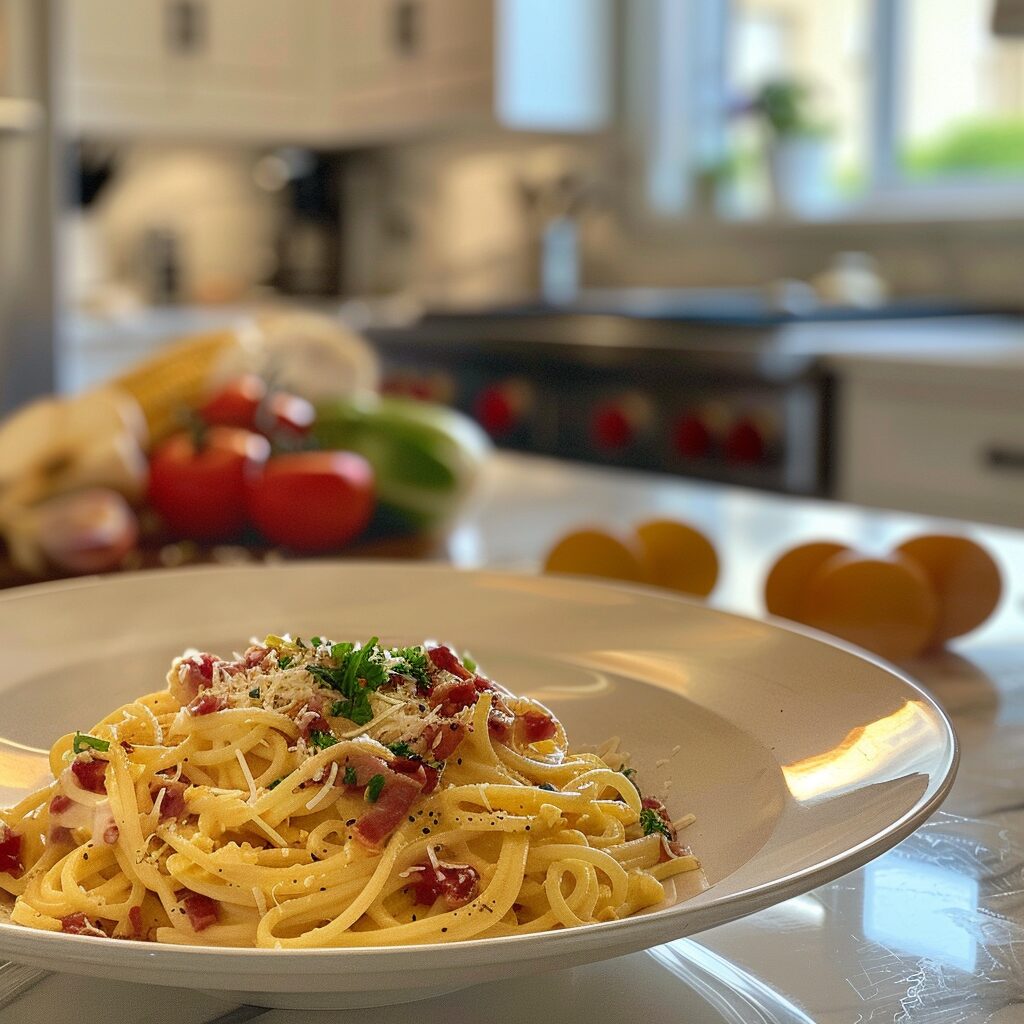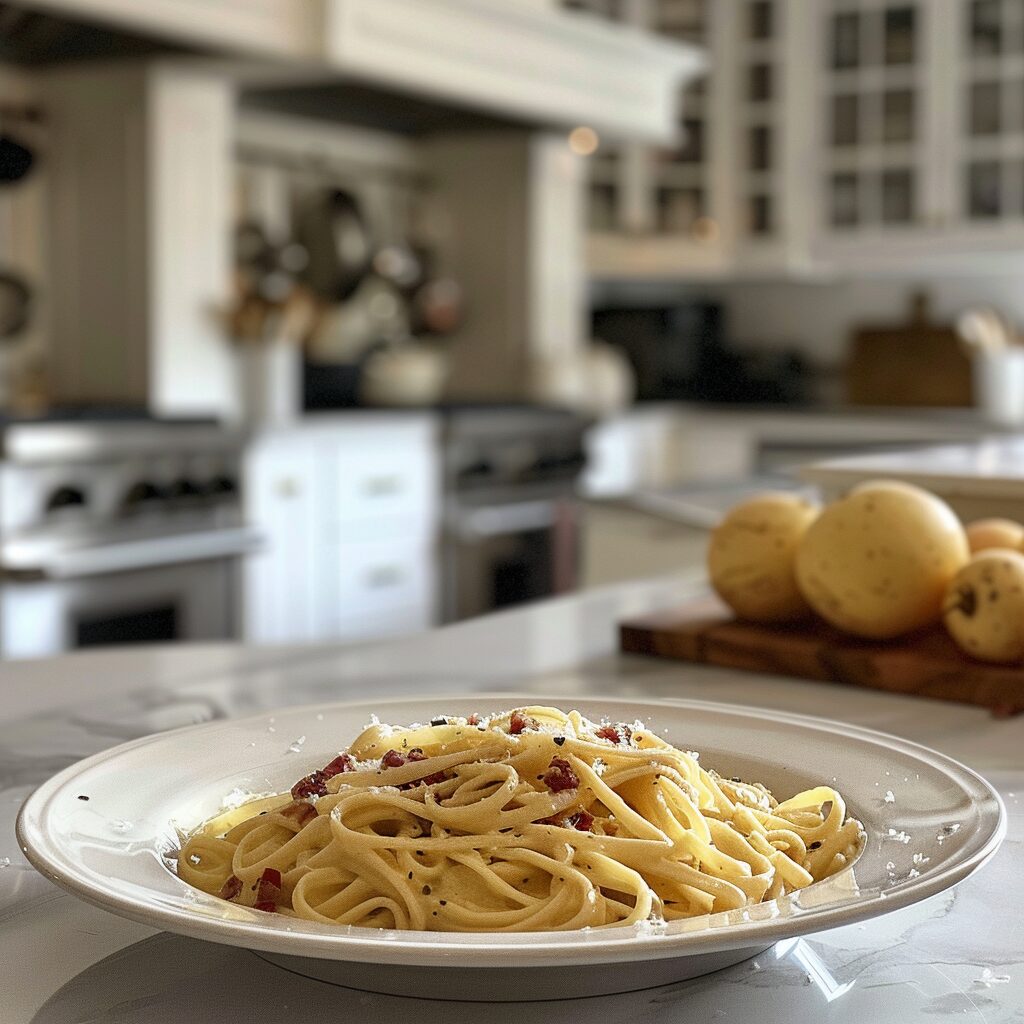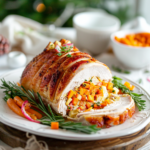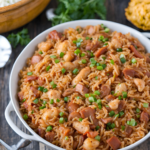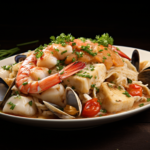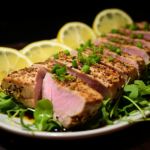A steaming plate of perfectly al dente spaghetti, coated in a silky, golden sauce, studded with crispy pancetta, and topped with a shower of freshly grated Pecorino Romano. That, my friends, is the magic of carbonara.
This Roman classic has a history as rich as its flavor. Legend has it that carbonara was born in the mid-20th century when American soldiers in Italy craved bacon and eggs for breakfast, inspiring local cooks to create this ingenious pasta dish. Whether true or not, it’s a testament to the beautiful simplicity of Italian cuisine.
The beauty of carbonara lies in its handful of high-quality ingredients and precise technique. The trick? Tossing hot pasta with a mixture of beaten eggs, cheese, and black pepper, allowing the residual heat to create a luscious, creamy sauce without scrambling the eggs. It’s a delicate dance that, when mastered, results in pure culinary bliss.
While perfect on its own, carbonara pairs beautifully with a side of Bacon Wrapped Asparagus for a touch of green. And why not complete your Roman holiday at home with a refreshing Raspberry Mojito?
What is Carbonara And it’s Origin?
Carbonara is an Italian pasta dish traditionally made with eggs, cheese (typically Pecorino Romano or Parmesan), pancetta or guanciale (cured pork), and black pepper. It’s known for its creamy texture and savory flavor.
Carbonara originated in Rome, Italy. Its exact origins are debated, but it likely emerged as a dish for Italian charcoal workers (“carbonari”), using readily available ingredients.
More Such Spaghetti Recipes Waiting for You!
Carbonara Recipe
Equipment
- Large pot for boiling pasta
- Skillet
- Frying Pan
Ingredients
- 200 g Spaghetti
- 150 g Guanciale diced (or pancetta as a substitute)
- 3 large Egg yolks
- 50 g Pecorino Romano cheese grated
- 50 g Parmesan cheese grated
- Freshly ground black pepper
- Salt
Instructions
- Cook the spaghetti in a large pot of salted boiling water until al dente.
- Meanwhile, in a skillet over medium heat, cook the diced guanciale until crispy. Set aside.
- In a bowl, whisk together the egg yolks, grated Pecorino Romano, and Parmesan cheeses until well combined.
- Drain the cooked spaghetti, reserving a cup of pasta water.
- Immediately add the hot spaghetti to the skillet with the guanciale, tossing to coat.
- Remove the skillet from heat and quickly stir in the egg and cheese mixture, using the reserved pasta water to loosen the sauce if needed.
- Season generously with freshly ground black pepper and salt to taste.
- Serve immediately, garnished with additional grated cheese and pepper if desired.
Notes
- Use freshly grated cheeses for the best flavor and texture.
- It’s crucial to toss the hot pasta with the egg mixture off the heat to avoid scrambling the eggs.
Nutrition
Time to Reveal My Best Tips and Tricks!
Tip 1: Always cook the pasta just before tossing with the sauce to ensure it’s hot and absorbs the flavors well.
Tip 2: Save some pasta water to adjust the sauce consistency—it helps in creating a creamy texture without scrambling the eggs.
Tip 3: For a richer flavor, consider using guanciale instead of pancetta, as it has a more intense taste.
Personalized Variations to Make This Recipe Your Own!
- Vegetarian Carbonara: Replace guanciale with sautéed mushrooms or smoked tofu.
- Spring Carbonara: Add fresh peas and chopped asparagus tips along with the pasta.
- Seafood Carbonara: Incorporate cooked shrimp or scallops just before serving.
- Spicy Carbonara: Stir in a pinch of red pepper flakes or diced chili peppers for a kick of heat.Herbed Carbonara: Mix in fresh herbs like parsley or basil for a vibrant flavor.

